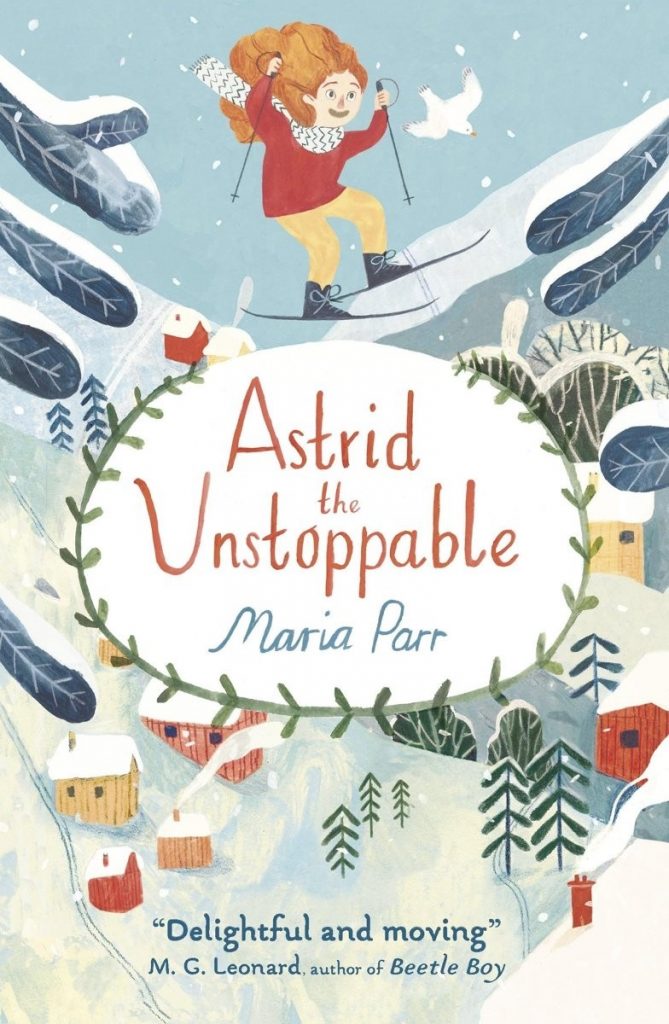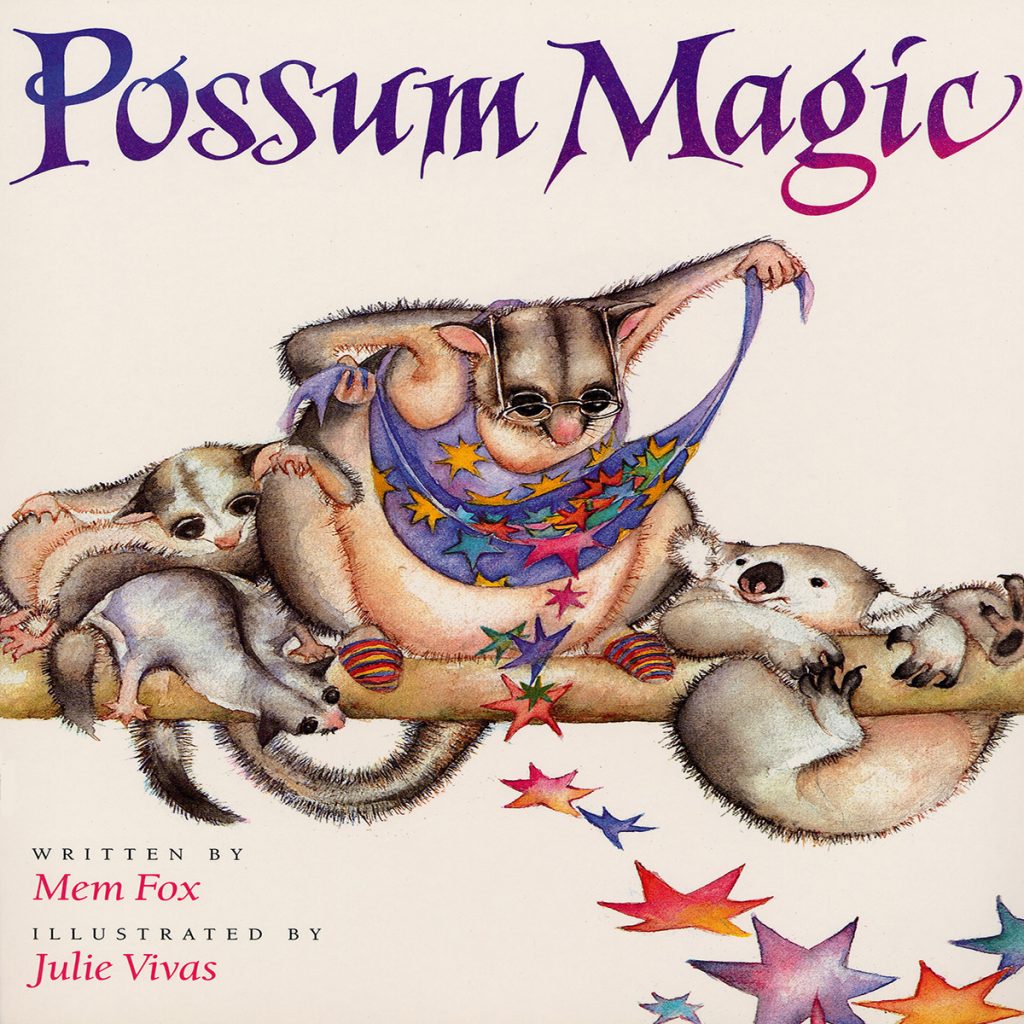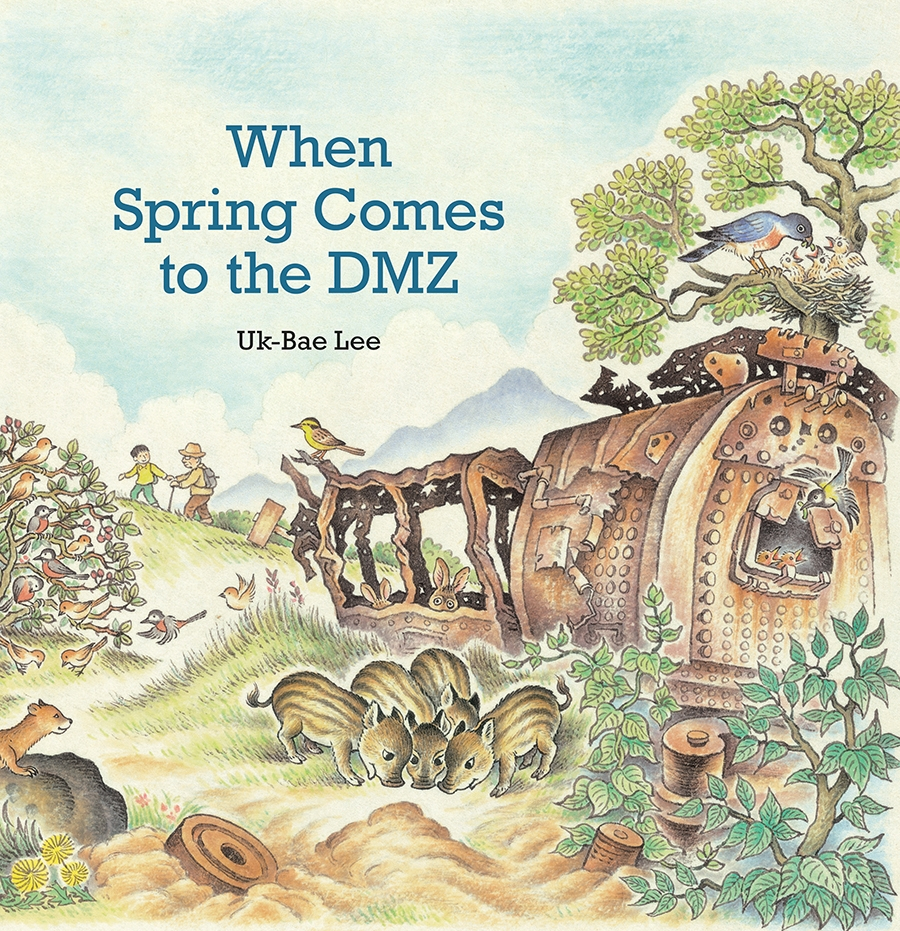
1. Bibliography
Parr, Maria. 2018. Astrid the Unstoppable. Somerville, MA: Candlewick Press. ISBN 978-1-5362-0017-1
2. Plot Summary
Astrid is unstoppable. She may be the only child in the small, rural town of Glimmerdal, but that’s not going to stop the fiery young heroine from having fun. Even though he’s seventy-four years old, Gunnvald—Astrid’s godfather—is her best friend and partner in crime. Together, the two have grand adventures. They come up with the best sled design for soaring down the snowy Norwegian mountainside and find the most effective way to round up Gunnvald’s misbehaving ram. Gunnvald knows everything about Astrid, and Astrid knows everything about Gunnvald—at least, she thinks she does. But when Gunnvald receives an unexpected letter with news about some woman Astrid has never heard off, Astrid learns there may be much more to Gunnvald’s past than she’d thought: things like a lover, a long-lost daughter, and a devastating mistake. Can Astrid help Gunnvald to right his past wrongs? And after finding out how much Gunnvald has hidden from her, does she really want to?
Translated from the original Norwegian, Astrid the Unstoppable is a heartwarming friendship story that centers around Astrid’s relationship with Gunnvald, Gunnvald’s relationship with his long-lost daughter, Heidi, and Heidi’s relationship with Astrid. The emphasis of the story is on family and belonging.
3. Critical Analysis
Characters are front and center in this charming little middle-grade novel. Astrid, our heroine, is a dynamic young character, on par with Anne Shirley in the personality department. The unstoppable “little thunderbolt of Glimmerdal” is funny, obnoxious, loving, and thoughtful. She may not win over everyone in her small town with her loud personality, but she certainly wins over the reader, whether she’s getting into a fist fight with the town’s newest visitors or kidnapping Heidi’s dog to use as leverage in her plot to save Gunnvald’s farm. Whatever Astrid thinks up next is going to be big and a little crazy, but it’s always going to come from the noblest of intentions.
Gunnvald is just as loveable, despite his pretended grouchiness. It’s clear that the old man cherishes his relationship with his little red-haired lioness, and listens to her suggestions (which children will delight to see), notwithstanding the fact that he’s more than sixty years her senior. And it’s a good thing too—Astrid cheers Gunnvald on (and sometimes yells him on) as he attempts to patch up his relationship with his daughter, ask for her forgiveness, and find hope to believe that she still loves him. Children will stand beside Astrid and cheer Gunnvald on as he does his best to reach out to Heidi again.
Astrid’s story, an USBBY honor title, contains several Norwegian markers. Gunnvald and the other old men in the town delight in a Norwegian tobacco substance called “snus” (or “disgusting snus” if you’re talking to Astrid), the characters often eat foods like reindeer meatballs and venison stew, and special emphasis is placed on Christmas and Easter celebrations. But while the Norwegian setting, language, foods, and religious preferences may be new to some readers, all children will find ways to relate to the book’s themes of friendship and family. Most children may not be best friends with their seventy-four-year-old godfather, but they will understand Astrid’s loyalty to her friend despite his flaws and the betrayal she feels when she learns that he’s been keeping secrets from her. They’ll also understand Astrid’s yearning to spend more time with her mother (who’s usually off in Greenland checking rising water levels for her job) and Heidi’s yearning to be loved by both her parents.
Whether you’re eight or seventy-four, you’ll find lots to love in Astrid the Unstoppable. This would make a great addition to any late elementary or early middle-school collection looking for more international titles and more sweet friendship stories. Highly recommended.
4. Rewards and Review Excerpts
Amazon Editors’ Picks: Best Books of the Year, 2018 (Ages 6-8)
Booklist Book Review Stars, 2018
USBBY Outstanding International Books, 2019 (Grades 3-5)
From Booklist: “Drama and humor are interwoven throughout the well-paced narrative, which transports readers to a distinctive locale and introduces vividly drawn, memorable characters. . . Norwegian writer Parr, whose Adventures with Waffles (2013) has been translated into many languages, offers another original chapter book with a strong sense of place and international appeal.”
From Horn Book Magazines: “The action scenes are riveting, but it’s the relationships that deepen the story and make it memorable. Although there’s no missing the homages to Heidi (Gunnvald resembles Spyri’s novel’s grandfather; Gunnvald’s daughter is named Heidi; and Astrid reads Heidi throughout) and Pippi Longstocking (with Astrid’s flaming red hair, self-confidence, and almost-an-orphan independence, not to mention her shared first name with Pippi’s author), Parr (Adventures with Waffles) has crafted a fresh and original tale, all her own.”
5. Connections
The book Heidi plays a large role in Astrid the Unstoppable and book reviewers have also noted many parallels between Astrid and Pippi Longstocking. After reading this book as part of a book club or read-aloud program, read excerpts of Heidi and Pippi Longstocking, looking for similarities between the main characters. You might also suggest that children watch the movie adaptations of Heidi and Pippi.
Create a display of Astrid and other children’s books set in Norway, such as Hilda and the Troll, Adventures with Waffles, D’Aulaires’ Book of Trolls, The Three Billy Goats Gruff, Locked in Ice: Nansen’s Daring Quest for the North Pole, and Doctor Proctor’s Fart Powder.
- Pearson, Luke. Hilda and the Troll. ISBN 9781909263789
- Parr, Maria. Adventures with Waffles. ISBN 9781536203660
- D’Aulaire, Ingri. D’Aulaires’ Book of Trolls. ISBN 9781590172179
- Asbjørnsen, Peter Christen. The Three Billy Goats Gruff. ISBN 9780816430802
- Lourie, Peter. Locked in Ice: Nansen’s Daring Quest for the North Pole. ISBN 9781250137647
- Nesbø, Jo. Doctor Proctor’s Fart Powder. ISBN 9781416979722

